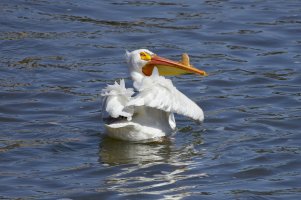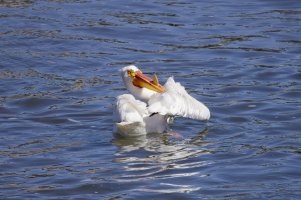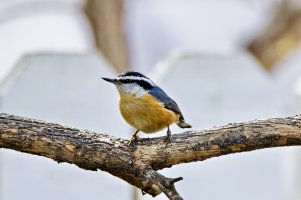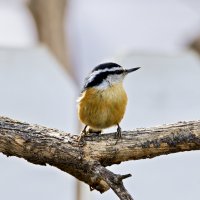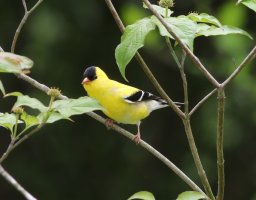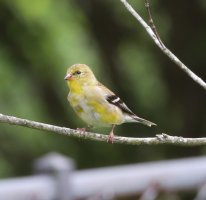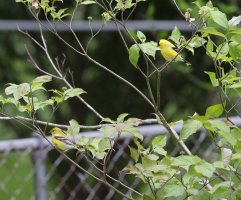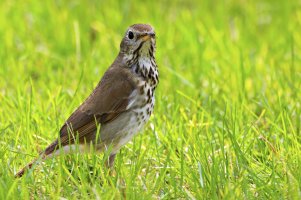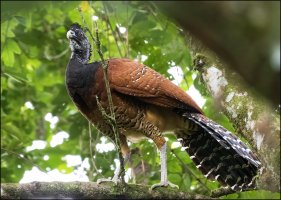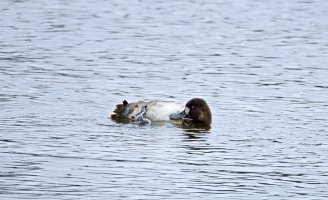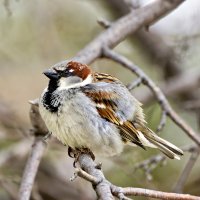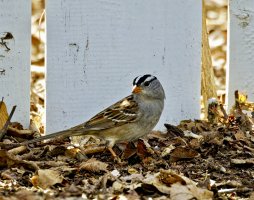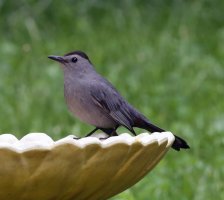You are using an out of date browser. It may not display this or other websites correctly.
You should upgrade or use an alternative browser.
You should upgrade or use an alternative browser.
Show your Bird Portraits
- Thread starter 1982chris911
- Start date
From my perspective, these photos turned out about as good as they could because any darker and the beak would lose it's natural look, while I see enough texture and variation of shading in the feathers that the brightest areas becoming blown out works without a sense of loss.Yeah - the Parakeet is lovely because of the colors! Since it's in the neighborhood I may have a chance to take a photo at better light! Too much contrast light and blown highlights in these photos...
I do like Tiffen's ultra contrast filters, but they'll make the photos soft I think it's ok if you won't be cropping, but with bird photography we can usually bet on cropping :/ Sometimes, I'll use one anyway though!
Upvote
0
There can be a problem taking shots of birds in bright sunlight. Regions with some colours, especially white, will be bleached to the eye. The trick is to underexpose and selectively lighten the dark areas. Slight shade out of direct sunlight can be the most natural.From my perspective, these photos turned out about as good as they could because any darker and the beak would lose it's natural look, while I see enough texture and variation of shading in the feathers that the brightest areas becoming blown out works without a sense of loss.
I do like Tiffen's ultra contrast filters, but they'll make the photos soft I think it's ok if you won't be cropping, but with bird photography we can usually bet on cropping :/ Sometimes, I'll use one anyway though!
Upvote
0
A young Great Horned Owl(previously posted in a tree) who decided to leave the nest early was doing its best turkey impersonation to fend off an impending capture for relocation.

R5 RF600 f/4L IS 1/640 : f/8 : ISO 320
And about a week later, climbing/hopping up a different tree to join a sibling returned by a rescue outfit.

R5 RF600 f/4L IS w/1.4x 1/100 : f/6.3 : ISO 1000

R5 RF600 f/4L IS 1/640 : f/8 : ISO 320
And about a week later, climbing/hopping up a different tree to join a sibling returned by a rescue outfit.

R5 RF600 f/4L IS w/1.4x 1/100 : f/6.3 : ISO 1000
Upvote
0
josephandrews222
I Shot the Sheriff, but I Did Not Shoot the Deputy
It is delightful and instructive to read this particular comment...There can be a problem taking shots of birds in bright sunlight. Regions with some colours, especially white, will be bleached to the eye. The trick is to underexpose and selectively lighten the dark areas. Slight shade out of direct sunlight can be the most natural.
I wonder if you would elaborate on the differences between sensors, in terms of your observation here that, at least for birds in bright sunlight, underexposing a bit at the time of acquisition, followed by selective lightening of dark areas in post, yields the best results.
I concur completely, with the following caveat--I have noticed more 'headroom' in images acquired with the M6MkII and its sensor (same as 90D) as opposed to images acquired with the 5DMk3.
Specifically, your observations here are very much agreement with mine when it comes to 5DMk3 images... but less so with the somewhat-less-ancient M6MkII images. I have been surprised and still can occasionally over-expose M6 images and not blow out highlights.
This is no doubt a real-world example of dynamic range improvements in newer sensors.
So back to the question: your own experiences... even with Canon's latest bodies and sensors, you still get optimal results by underexposing a bit? Are the new sensors, in your hands, the same as the old ones? Or different?
For what it is worth, my first full-time awareness of the advantages of slight underexposing resulted from shooting pop/rock music concerts with the Canon S95 and its tiny 1/1.7" sensor.
Upvote
0
I agree, and it's what I'm doing for years. The problem is that in some situations recovering the low-lights (after making so big - EV correction) compromise the real colors and that bird has a real colors (I mean bold, nice e.t.c.There can be a problem taking shots of birds in bright sunlight. Regions with some colours, especially white, will be bleached to the eye. The trick is to underexpose and selectively lighten the dark areas. Slight shade out of direct sunlight can be the most natural.
Upvote
0
Shots don’t have to be perfec, just god enough For what you feel happy with.I agree, and it's what I'm doing for years. The problem is that in some situations recovering the low-lights (after making so big - EV correction) compromise the real colors and that bird has a real colors (I mean bold, nice e.t.c.)! In this case I would be on the branch with EricN or non of both: just wait for the bird to move into better light (you risk to get no photos) or the canopy above to make better shade (you risk the same). In my particular case I was ashamed to ask the owner for more time (after she told my "it's my pet"
). By far it's non of problem compared to what I got yesterday!
Upvote
0
I haven’t taken any notice of the different sensors. I guess it might depend on the iso. The 5Diii has relatively low DR at low iso, but I am rarely at low iso and usually crop so APS-C is not disadvantageous.It is delightful and instructive to read this particular comment...
I wonder if you would elaborate on the differences between sensors, in terms of your observation here that, at least for birds in bright sunlight, underexposing a bit at the time of acquisition, followed by selective lightening of dark areas in post, yields the best results.
I concur completely, with the following caveat--I have noticed more 'headroom' in images acquired with the M6MkII and its sensor (same as 90D) as opposed to images acquired with the 5DMk3.
Specifically, your observations here are very much agreement with mine when it comes to 5DMk3 images... but less so with the somewhat-less-ancient M6MkII images. I have been surprised and still can occasionally over-expose M6 images and not blow out highlights.
This is no doubt a real-world example of dynamic range improvements in newer sensors.
So back to the question: your own experiences... even with Canon's latest bodies and sensors, you still get optimal results by underexposing a bit? Are the new sensors, in your hands, the same as the old ones? Or different?
For what it is worth, my first full-time awareness of the advantages of slight underexposing resulted from shooting pop/rock music concerts with the Canon S95 and its tiny 1/1.7" sensor.
Upvote
0
Yesterday: botanical garden. Didn't expect any interesting bird. Looking for a better angle to shoot some Abutilon I almost crashed into family of Gray Francolin! I wouldn't post the photo if not the story! Nearly ~5 meters from me two birds were spooked and did fly in opposite directions. I concentrated on the one that made short fly (~5 meters?) and made an U-turn with false attack!!! At that moment I was sure there are chicks around! Look at the beautiful background and a bird almost exceeding the frame - didn't have any better opportunity!
In my anger I did shoot also an innocent Red-whiskered Bulbu l!
l!
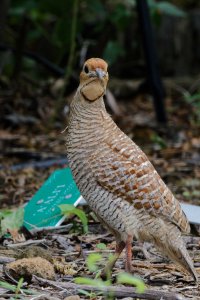
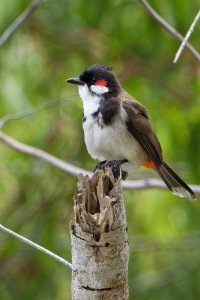
In my anger I did shoot also an innocent Red-whiskered Bulbu


Last edited:
Upvote
0
Why can't we have birds like your over here! Luck favours the well-prepared camera.Yesterday: botanical garden. Didn't expect any interesting bird. Looking for a better angle to shoot some Abutilon I almost crashed into family of Gray Francolin! I wouldn't post the photo if not the story! Nearly ~5 meters from me two birds were spooked and did fly in opposite directions. I concentrated on the one that made short fly (~5 meters?) and made an U-turn with false attack!!! At that moment I was sure there are chicks around! Look at the beautiful background and a bird almost exceeding the frame - didn't have any better opportunity!
In my anger I did shoot also an innocent Red-whiskered Bulbul!View attachment 216303View attachment 216304
View attachment 216303
Upvote
0
Similar threads
- Replies
- 118
- Views
- 97K

